The shield
Shields as defensive weapons have a long history. In ancient times simple round shields, made of wood and studded with leather, were used by both infantry and cavalry. Roman infantry used large rectangular shields, that could easily be rested on the ground.
The first shield used in heraldry was the Normannic shield which was in use from the end of the eleventh to the beginning of the thirteenth century. In Italy this shape was occasionally used well into the Renaissance.
Normannic shields were long, narrow and kite-shaped, covering a knight from head to knee, as can be seen on the Bayeux Tapestry which relates the victory of Wilhelm the Conqueror over King Harold II. in the Battle of Hastings (1066).
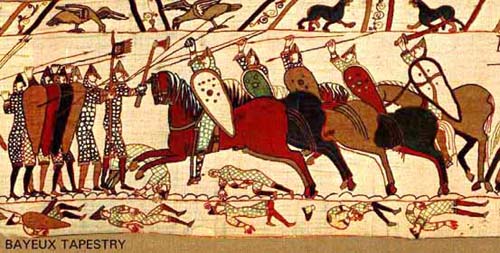
A section of the Bayeux Tapestry
As the knights´ armour developed, shields changed shapes. The knight´s head was now protected by a helmet, shields grew shorter and their upper edge was gradually straightened, which lead to the typical gothic triangular shield, up to this day the most popular shield in heraldry. It´s shape reminds of the base of a flat-iron, which is why this shield is also called a heater shield.
In time the lower edge was rounded. The gothic round shield, also and more appropriately called gothic semi-round shield, evolved. Because of this shapes´ immense popularity in Spain, it is also know as the Spanish shield. The reason for this shields' popularity lies in the fashion of quarterly parted shields. The round lower part simply left more room for the depiction of charges, than the triangular shape.
The increasing efficiency of the long bow and constant advancement of the knight´s plate armour rendered the shield more and more useless as a defensive weapon. In the fifteenth century shields were hardly used in battle. They did, however, retain their usefulness in tournaments.
From Italy came a special shield for tournament use, the shield à bouche, which had a notch on the right side to rest the lance in. Shields à bouche were popular with armorists of the seventeenth to the nineteenth century. Today they are rarely used in heraldry.
| SHIELD-SHAPES | |||
| gothic | gothic | Spanish | à bouche |
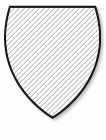 |
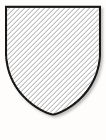 |
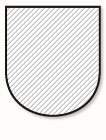 |
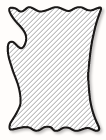 |
| French | oval | square | |
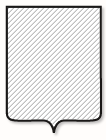 |
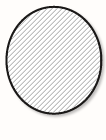 |
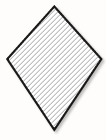 |
|
To accomodate the numerous quarterings, shields in the sixteenth and seventeenth centuries were almost square and often pointed at the lower edge. Because of their popularity in France these shields are called French shields.
Oval shields, which were so popular in the baroque era, were hardly used by medieval knights.
The so-called lozenge shield had evolved by the end of the thirteenth century and was almost exclusively used by ladies.
With the end of the Middle Ages came the end of chivalry. Heraldics degenerated from a practical to a merely theoretical art. Arms were used for decorative purposes or to demonstrate one´s rank in society.
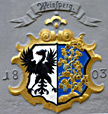 During Baroque and Rococo eras voluptuous, richly ornamented shields of sometimes rather grotesque shapes evolved, which could never have been used in battle. The French Revolution of 1789 and the burgeois revolutions of 1848 put an end to this.
During Baroque and Rococo eras voluptuous, richly ornamented shields of sometimes rather grotesque shapes evolved, which could never have been used in battle. The French Revolution of 1789 and the burgeois revolutions of 1848 put an end to this.
Modern day armorists tie in with medieval heraldry, when the art and science of armourial bearings was at it´s peak.
 Deutsch
Deutsch